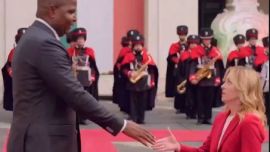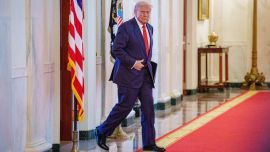It is happening right now. Not a few will say, or already have said, good riddance. Here in Argentina we have an increasing number of individuals running for office without effective – i.e. visible and established – recourse to party structures of traditional standing. Come election time people vote for the face of an institutional structure. It is not the party but the individual who takes prominence. These “unions” or parties are frequently formed with elections in view.
A whip-round is organised to raise funds to pay for rentals of party offices or supporters and candidates are asked for short-term loans of private properties, empty shops, etc. The law, however, still requires that candidates appear to be backed by a legal entity called a political party. In non-election time these groups are of little importance beyond the iron railings around Congress. Some groups call meetings from time to time and three followers turn up.
Membership is seldom heard of as it is an accumulative process of “lists” from preceding decades. For example, at the end of each dictatorship, in the past, party supporters and canvassers went out in search of new members in a drive that was developed more as a direct publicity stunt than a recruitment campaign. More recently, different political groups appeared to “inherit” membership “lists” in some kind of cross-party arrangement between old and new brands. With a selection of these resources, a party could muster sufficient names to go to the electoral court and apply for legal recognition.
Individuals are taking the lead over the institutional parties that still remain. This requires not much more than local agents and temporary treasurers to manage the cash. Evidence of the change here in Argentina is in the last presidential elections. It was the leader who used a name (Cambiemos), but the party itself had little or no authority.
In other words, parties are short-term businesses and the current trend is aimed at making us think that the age when Argentine parties are seen as unreliable and corrupt little brotherhoods is coming to an end. European politics seem to travel the same path, starting with Britain in recent years, perhaps barring the Scottish Nationalist Party. And most notably in the United States, which might even merit an updated if accidental reference to Bernard London’s concept of “planned obsolescence” (consumption as a way out of the Depression) in 1932. Or it could even be a kind of representation of the “liquid modernity” of Zygmunt Bauman (1925-2017), where nothing now has the solid reality of that witnessed by the generation of grandparents in the first half of the 20th century or even before that.
Argentina’s political framework had a stage of solid political reality, even if many now don’t much like that age (probably rightly so). For example, Argentina did have a liberal conservative model of a political party that held the country’s leadership for more than half a century, its existence saddling the 19th and 20th. In 1862, liberal politician Adolfo Alsina started the Autonomous (Autonomista) party, with the aim of keeping Buenos Aires out of a confederation of provinces. This group followed the line or was a continuation of the Unitarian (Unitario) party, which had opposed dictator Juan Manuel de Rosas (in government, with interruptions, between 1829 and military defeat in 1852) in a bloody rivalry up and down the country. In 1874, Alsina faced serious defeat in parliamentary elections and reached agreement with the popular National Party to establish an alliance. The new organisation was the Autonomista Nacional party, known as Argentina’s long strong conservatives who ruled or controlled those who ruled almost continuously right through to 1916. That was when Hipólito Yrigoyen (1852-1933) and his Civic Radical Union (UCR) swept into power in the first election since the introduction of the universal vote, known as the Saenz Peña law. The defeat in 1916 marked the end of the conservative party in Argentina. Following that, welcome populism. Smaller groups would use the name of conservative in failed attempts to regain office.
The UCR had been founded in 1891 by Leandro N. Alem, a well-known politician and a relation of Yrigoyen, and it could be ranked as another of the country’s long-life parties. Its high point in national history was the beginning of a remarkable feat in the 1916 elections and Raúl Alfonsín’s election in 1983 might be considered the party’s closing chapter as a well-organised network of local branches. By the time of the election to the presidency of Fernando de la Rúa in 1999, the party was fading rapidly. Perhaps its survival as a name was the alliance of sorts with the ruling Cambiemos (Let’s Change) coalition, but that was no longer the party political alliance of old and the whole structure was changing. The individuals with a yen for politics and power were ready for the succession.
Obvious it is that many will argue that Peronism is a party that stands with the other long-runners surviving nationwide control, then banishment and finally defeat as well as victory. But Peronism was a one-man party in many ways, registered as the Peronist Party in January 1947. Juan Domingo Perón did not like the concept of “parties.” He considered himself leader of a “Peronist movement” that had to change the country and change with the times. Today, and for some time now, Peronism has established itself as a platform for rule-by-handouts governance.
The Communist Party was founded in La Boca in January 1918 and remains a rule-by-committee organisation. However, it has outlived many other groups. But if some of those mentioned are yesterday’s men, they are part of yesterday’s parties. We can only wonder for now how the transition takes place.
(*) Former editor of the Buenos Aires Herald (1994-2007)























Comments